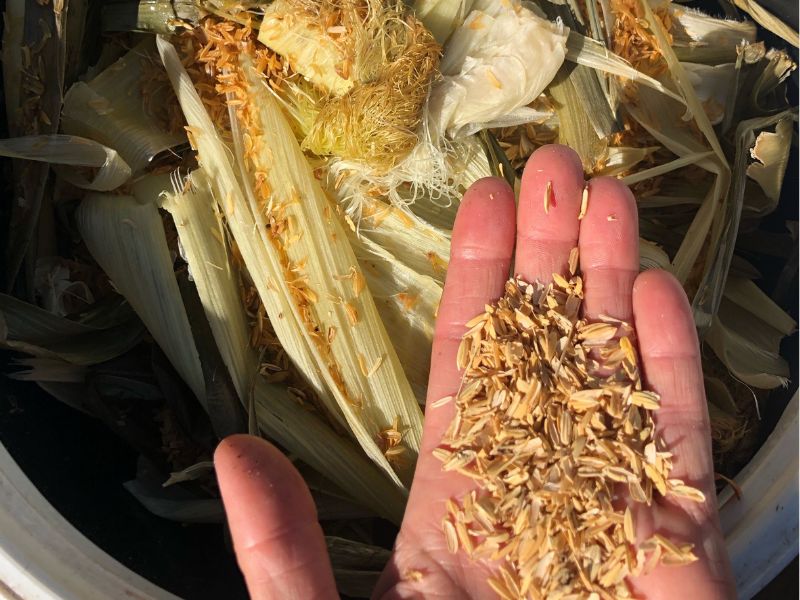What is bokashi?
The Bokashi method is used for composting all organic food waste, including meat, dairy and fats. It was developed in Japan and used in Asia to ferment food prior to composting. The process uses lactobacillus bacteria to predigest waste matter, which eliminates odors and decreases composting time. The process is similar to making yogurt, cheese, and sauerkraut. Bokashi is a great pre-composting method for diverting all food scraps from going to the landfill. The Bokashi Method works best when it is let to steep without air contact, so remember to screw on the lids when not adding to the bin!
Bokashi bran is a complex blend of bacteria and yeast which, when applied to kitchen waste and kept in an anaerobic environment, will outcompete all the other microbes (like mold) that would grow on the decomposing scraps. Bokashi bran is made by inoculating grains, hulls or grass-like substances (i.e., spent beer grains, bran, or wheat) with effective microorganisms.
The benefits of Bokashi pre-composting:
-
Produces an end product that is richer in organic matter and nutrients
-
Allows you to compost any organic material easily, including proteins
-
Does not generate any greenhouse gases
-
Does not require any turning
-
Captures all nutrients/by-products in a sealed container
-
Minimizes worry about insects or rodents
-
Can be done on a small scale, e.g. in an apartment
-
Enables you to keep food scrap in the airtight container until you are ready to drop it off to us

What do I need to bokashi?
1. FOOD WASTE OF ANY KIND
This includes all meat, fish, poultry, dairy products, and bones.
2. BOKASHI BRAN
Available for purchase at Solana Center or online.
3. NO AIR!
Bokashi microorganisms live in conditions with little to no oxygen. A sealed, airtight container is required.
Why should I use bokashi?
- The bokashi method allows you to stockpile food waste and compost when you want. Since the bokashi method preserves your food waste, there's no rush to add it to the pile before it begins putrefying and losing essential nitrogen. This means that bokashi works on your schedule! It can even be used alongside vermicomposting; if your worms aren't hungry now, ferment your food and feed it to them later!
- Maximize results and reduce composting time. In households where food waste is the only "green" compost ingredient and not much is produced at a time, it can be difficult to build up the volume needed to achieve a hot pile. But with bokashi, you can build up your store of greens until you have enough to build a hot compost pile. A hot pile will decompose much faster than a smaller, cooler pile and will kill weed seeds and pathogens along the way. Don't worry; the acidity of the preserved waste will neutralize as it decomposes aerobically.
- Compost ALL food waste. Most composters have heard to keep meat and dairy out of the compost bin; the microbes that tend to take these over can stink, attract pests, and may even be toxic. But exposing these wastes to bokashi organisms keeps the more problematic microbes at bay, allowing you to safely compost meat, bones, and dairy so you can divert even more waste!
- Process food waste with no compost bin, browns, or maintenance. An alternative method to composting bokashi waste traditionally is "trenching." The fermented matter can simply be added to a trench or hole in the earth, buried under several inches of soil to deter pests, and left for 2-4 weeks to finish decomposing. Air within the soil, along with the tunnelling action of worms who are especially attracted to the bokashi waste, will allow your food waste to transform into a nutrient-rich soil amendment.
